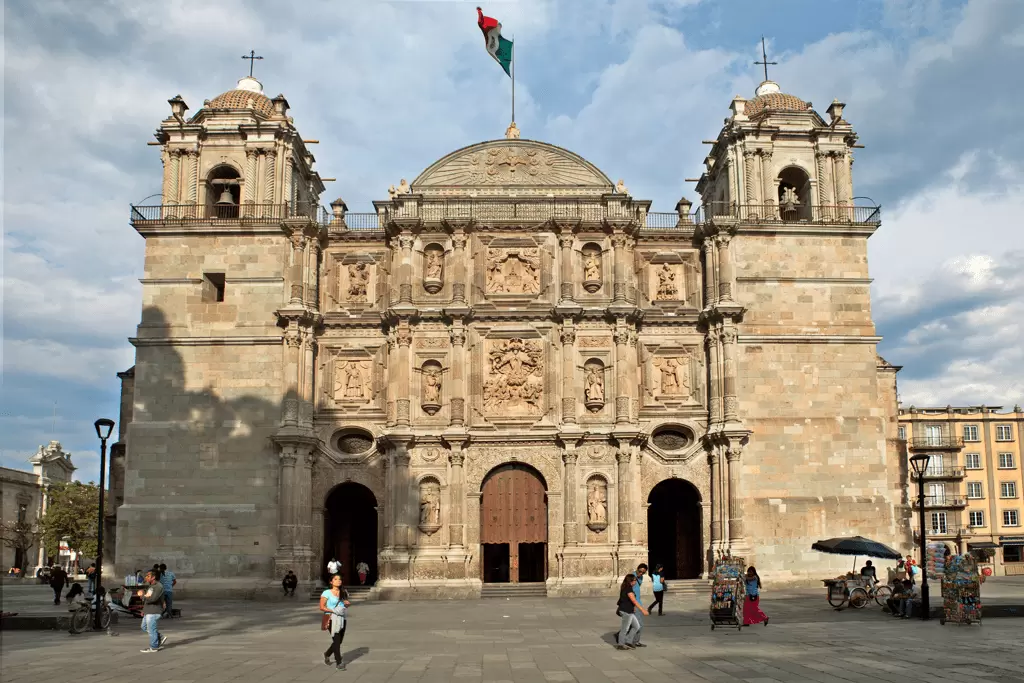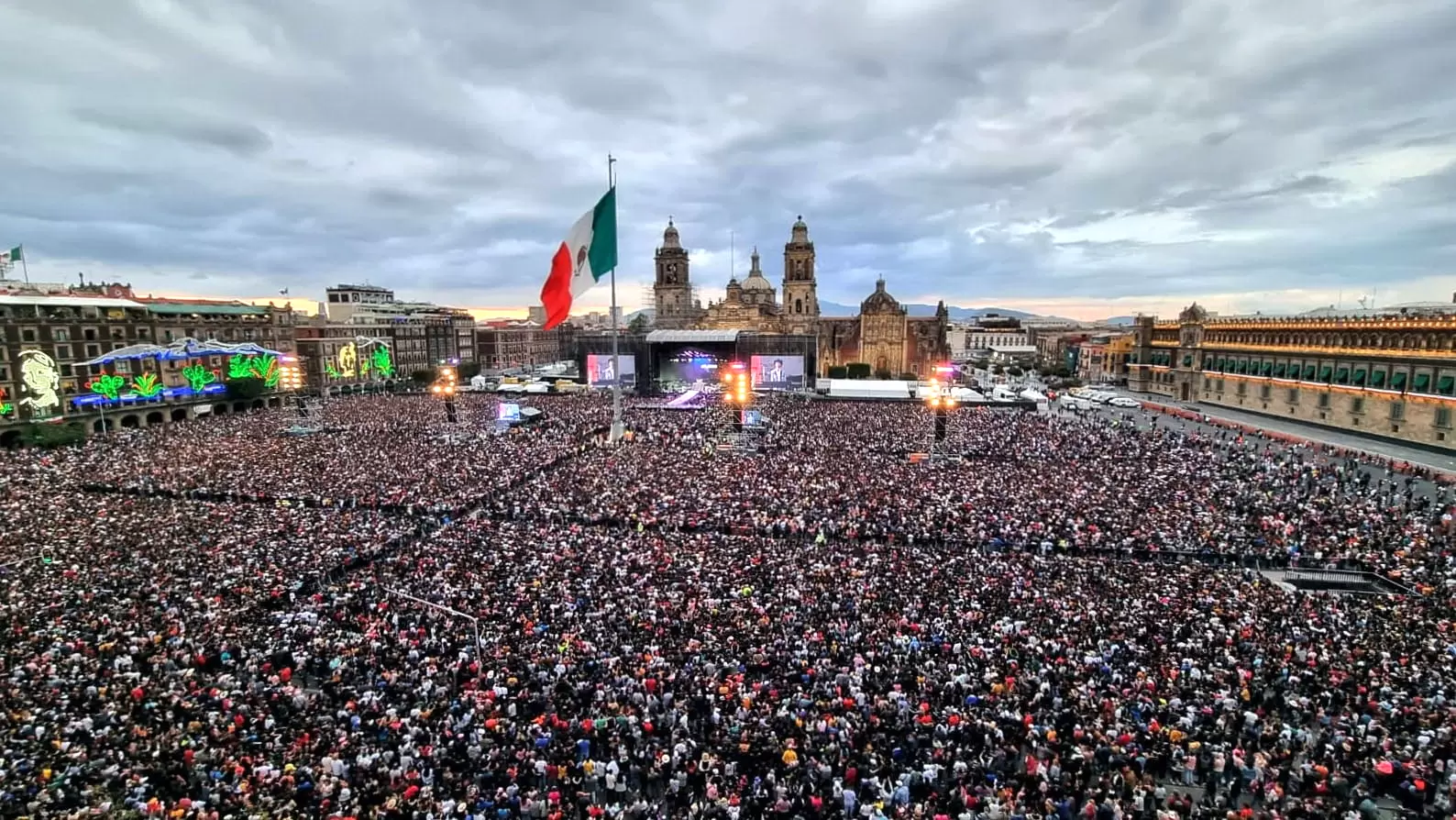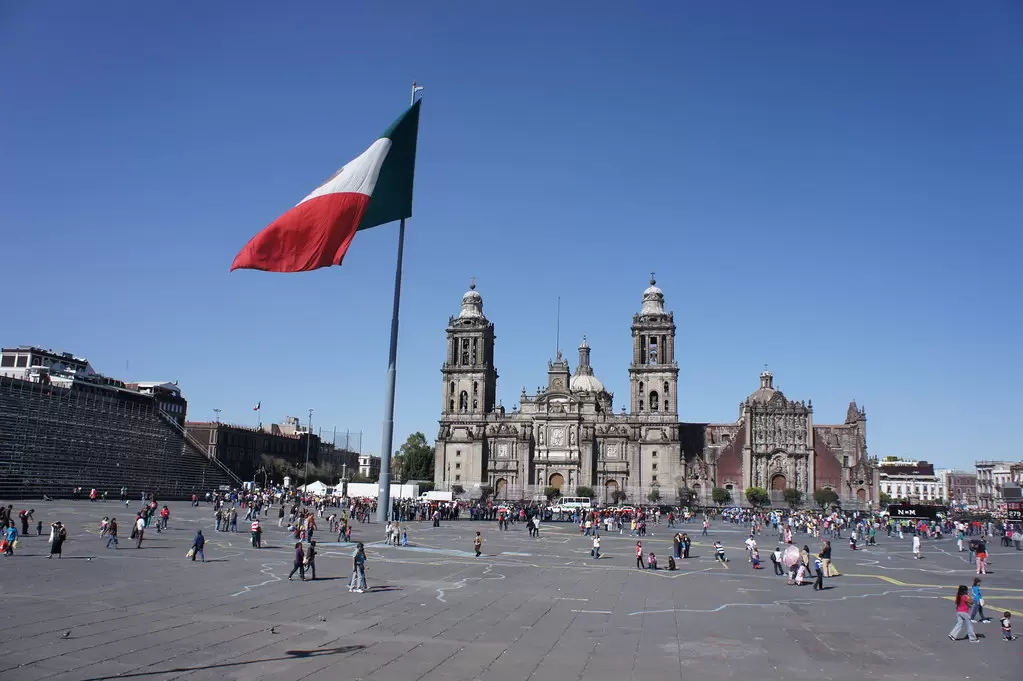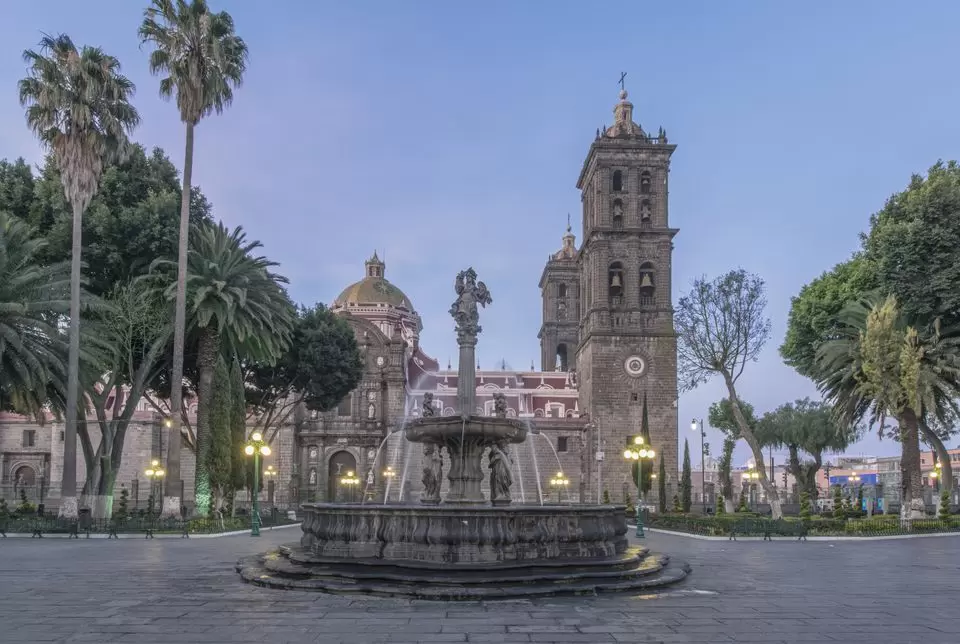Zócalo, Meksika'nın başkenti Mexico City'nin merkezinde yer alan büyük bir meydandır. İspanyol sömürge döneminde, bu meydanın adı Plaza de la Constitución olarak biliniyordu. Ancak, Meksika'nın bağımsızlığından sonra, meydanın adı Zócalo olarak değiştirildi. Zócalo, Meksika'nın en büyük meydanlarından biridir ve birçok tarihi yapıya ev sahipliği yapar. Meydanın ortasında, Meksika bayrağı dalgalanır ve çevresindeki binaların çoğu, İspanyol sömürge mimarisinin özelliklerini taşır. Zócalo, Meksika'nın kültürel ve tarihi mirasının önemli bir sembolüdür ve her yıl birçok turist tarafından ziyaret edilir. Meydan, aynı zamanda, Meksika'nın siyasi ve sosyal hayatında da önemli bir rol oynamaktadır.
Zócalo: Mexico City's Historic Heart
Mexico City is a vibrant and bustling metropolis that is home to over 21 million people. At the heart of this sprawling city lies the Zócalo, a historic square that has been the center of political and cultural life in Mexico for centuries.
The Zócalo, also known as the Plaza de la Constitución, is one of the largest public squares in the world, measuring over 57,000 square meters. It is surrounded by some of Mexico City's most iconic buildings, including the National Palace, the Metropolitan Cathedral, and the Templo Mayor.
The square has a rich history that dates back to the Aztec era, when it was known as the "Huey Tlatoani" or "Great Speaker's Place." It was here that the Aztec emperor would address his people and perform important religious ceremonies.
After the Spanish conquest of Mexico in the 16th century, the Zócalo became the center of colonial power. The National Palace, which was built in the 16th century, served as the residence of the Spanish viceroy and later the Mexican president. Today, it houses the offices of the president and the Federal Treasury.
The Metropolitan Cathedral, which was built in the 16th century, is one of the most important religious buildings in Mexico. It is the largest cathedral in the Americas and is home to many important works of art, including a painting of the Virgin of Guadalupe, Mexico's patron saint.
The Templo Mayor, which was the main temple of the Aztec capital of Tenochtitlan, was rediscovered in the 20th century and is now a major archaeological site. Visitors can explore the ruins of the temple and learn about the Aztec civilization that once thrived in Mexico City.
Today, the Zócalo remains a vibrant and important part of Mexico City's cultural life. It is a popular gathering place for locals and tourists alike, and is the site of many important events, including political rallies, concerts, and cultural festivals.
In conclusion, the Zócalo is a historic and cultural treasure that is an essential part of Mexico City's identity. Its rich history and stunning architecture make it a must-see destination for anyone visiting the city.
Exploring the Rich History of Zócalo

Zócalo, also known as Plaza de la Constitución, is one of the most iconic landmarks in Mexico City. This historic square has been the center of political and cultural life in Mexico for centuries, and it continues to be a popular destination for tourists and locals alike.
The history of Zócalo dates back to the Aztec era, when it was known as the "Main Square" or "Huey Teocalli". It was the site of many important ceremonies and rituals, including the coronation of Aztec emperors and the sacrifice of prisoners of war. After the Spanish conquest, the square was renamed Plaza de Armas and became the center of colonial power in Mexico.
In the 19th century, Zócalo became a symbol of Mexican independence and national identity. It was the site of many important events, including the proclamation of the Mexican Constitution in 1857 and the celebration of the centennial of Mexican independence in 1910. During the Mexican Revolution, Zócalo was the site of many political rallies and demonstrations.
Today, Zócalo is a vibrant cultural hub that attracts visitors from all over the world. It is surrounded by some of Mexico City's most important landmarks, including the Metropolitan Cathedral, the National Palace, and the Templo Mayor. The square is also home to many street performers, vendors, and artists, who add to its lively atmosphere.
Exploring the rich history of Zócalo is a fascinating journey through Mexico's past. From its ancient Aztec roots to its modern-day cultural significance, this historic square has played a central role in shaping Mexico's identity and culture. Whether you're a history buff or simply looking for a unique cultural experience, Zócalo is a must-visit destination in Mexico City.
Zócalo: A Vibrant Hub of Culture and Entertainment

Zócalo, also known as the Plaza de la Constitución, is the main square in the heart of Mexico City. It is one of the largest public squares in the world and has been a hub of culture and entertainment for centuries.
The square is surrounded by some of the most important buildings in Mexico City, including the National Palace, the Metropolitan Cathedral, and the Templo Mayor. It is also home to a number of museums, restaurants, and shops, making it a popular destination for both locals and tourists.
One of the most notable events that takes place in Zócalo is the annual Day of the Dead celebration. This festival, which takes place on November 1st and 2nd, is a time for families to honor their deceased loved ones. The square is filled with colorful altars, music, and dancing, creating a vibrant and festive atmosphere.
In addition to the Day of the Dead celebration, Zócalo is also a popular spot for concerts, political rallies, and other cultural events. The square has hosted performances by some of the biggest names in music, including Paul McCartney, Shakira, and the Rolling Stones.
Despite its long history and cultural significance, Zócalo has not been without controversy. In 2013, a controversial art installation was erected in the square, featuring a giant inflatable sculpture of a cartoon character. The installation was met with criticism from some who felt it was inappropriate for such a historic and sacred space.
Despite these controversies, Zócalo remains a vibrant hub of culture and entertainment in Mexico City. Its rich history and cultural significance make it a must-visit destination for anyone traveling to the city.
Discovering the Hidden Gems of Zócalo

Zócalo, also known as the Plaza de la Constitución, is the main square in the heart of Mexico City. It is one of the largest public squares in the world and has been the center of political and cultural life in Mexico for centuries. However, beyond its grandeur and historical significance, Zócalo is also home to some hidden gems that are waiting to be discovered.
One of the most notable hidden gems of Zócalo is the Templo Mayor, an ancient Aztec temple that was discovered in the 1970s. The temple was once the center of the Aztec empire and is now a museum that showcases the rich history and culture of the Aztecs. Visitors can explore the ruins of the temple and learn about the Aztec civilization through the various artifacts and exhibits on display.
Another hidden gem of Zócalo is the Palacio Nacional, a grand palace that serves as the official residence of the President of Mexico. The palace is also home to some of the most impressive murals by the famous Mexican artist Diego Rivera. The murals depict the history of Mexico from pre-Columbian times to the Mexican Revolution and are a must-see for anyone interested in Mexican art and history.
For those looking for a more contemporary experience, Zócalo also has a vibrant street art scene. The walls and buildings around the square are adorned with colorful murals and graffiti that reflect the social and political issues of modern-day Mexico. Visitors can take a walking tour of the street art and learn about the artists and their messages.
In conclusion, Zócalo is not just a grand public square, but also a treasure trove of history, art, and culture. The hidden gems of Zócalo offer a unique and enriching experience for visitors who are willing to explore beyond the surface. Whether it's the ancient Aztec temple, the grand palace with its impressive murals, or the vibrant street art scene, Zócalo has something for everyone.
Zócalo: A Must-Visit Destination for Travelers to Mexico City

Mexico City is a vibrant and bustling metropolis that offers a wealth of cultural and historical attractions for visitors to explore. One of the must-visit destinations in the city is the Zócalo, a large public square located in the heart of the historic center.
The Zócalo, also known as the Plaza de la Constitución, is one of the largest public squares in the world, measuring approximately 240 meters by 240 meters. It has been a central gathering place for the people of Mexico City since the Aztec era, and today it remains a hub of activity and a symbol of Mexican culture and identity.
One of the most striking features of the Zócalo is the massive Mexican flag that flies in the center of the square. The flag is ceremoniously raised and lowered each day, and visitors can witness this impressive display of national pride.
Surrounding the Zócalo are some of Mexico City's most iconic landmarks, including the Metropolitan Cathedral, the National Palace, and the Templo Mayor. The Metropolitan Cathedral is a stunning example of colonial architecture, with its ornate façade and towering bell towers. The National Palace, which serves as the official residence of the President of Mexico, is home to some of the country's most important historical artifacts and murals. The Templo Mayor, an ancient Aztec temple, was discovered in the 1970s and has since been partially restored and opened to the public.
In addition to its historical and cultural significance, the Zócalo is also a popular spot for street performers, vendors, and festivals. Visitors can enjoy live music, dance performances, and traditional food and drink while taking in the sights and sounds of this vibrant public space.
Overall, the Zócalo is a must-visit destination for travelers to Mexico City. Its rich history, stunning architecture, and lively atmosphere make it a true gem of the city and a symbol of Mexican culture and identity.

Yorumlar